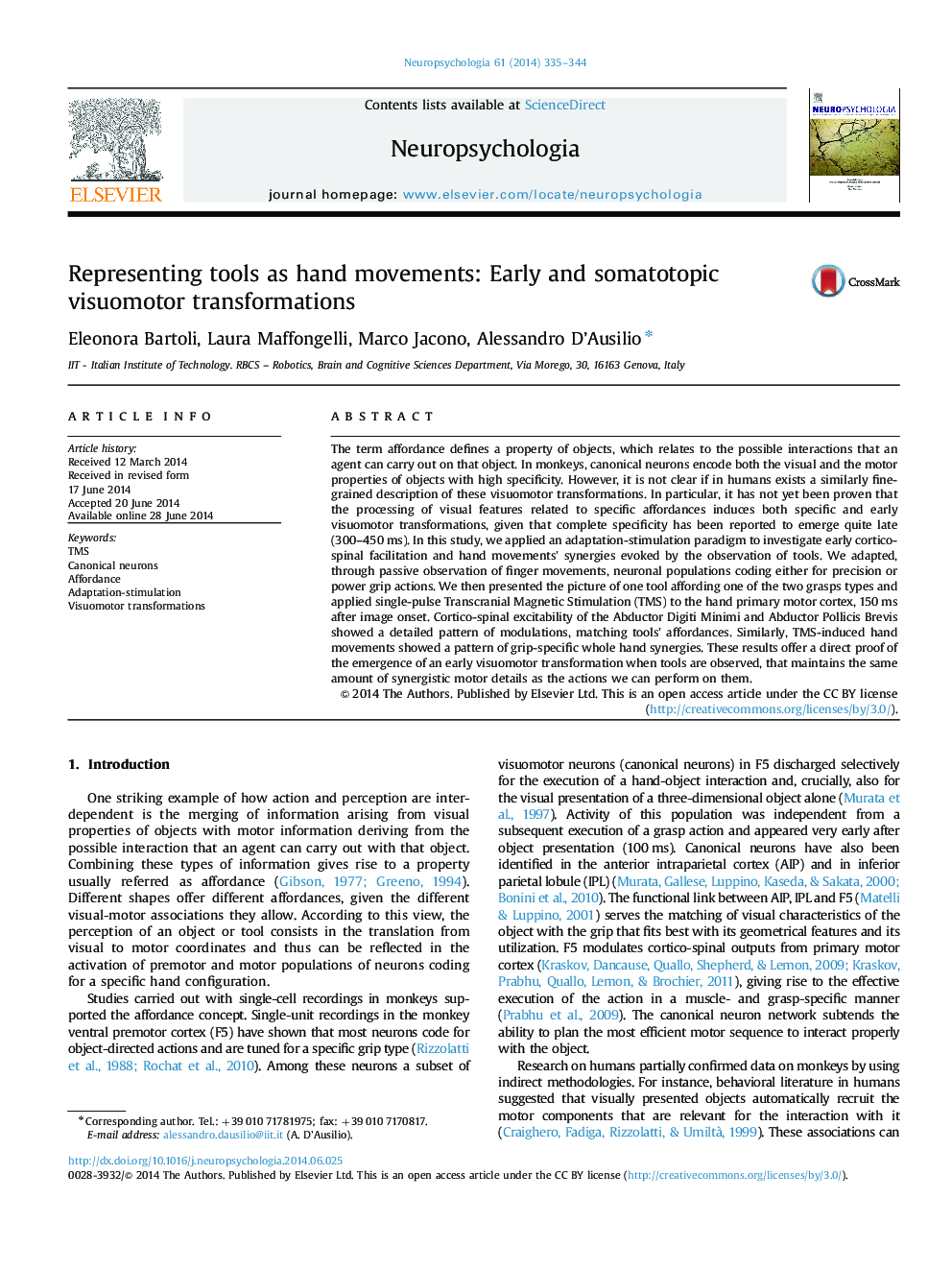| Article ID | Journal | Published Year | Pages | File Type |
|---|---|---|---|---|
| 7321261 | Neuropsychologia | 2014 | 10 Pages |
Abstract
The term affordance defines a property of objects, which relates to the possible interactions that an agent can carry out on that object. In monkeys, canonical neurons encode both the visual and the motor properties of objects with high specificity. However, it is not clear if in humans exists a similarly fine-grained description of these visuomotor transformations. In particular, it has not yet been proven that the processing of visual features related to specific affordances induces both specific and early visuomotor transformations, given that complete specificity has been reported to emerge quite late (300-450 ms). In this study, we applied an adaptation-stimulation paradigm to investigate early cortico-spinal facilitation and hand movements׳ synergies evoked by the observation of tools. We adapted, through passive observation of finger movements, neuronal populations coding either for precision or power grip actions. We then presented the picture of one tool affording one of the two grasps types and applied single-pulse Transcranial Magnetic Stimulation (TMS) to the hand primary motor cortex, 150 ms after image onset. Cortico-spinal excitability of the Abductor Digiti Minimi and Abductor Pollicis Brevis showed a detailed pattern of modulations, matching tools׳ affordances. Similarly, TMS-induced hand movements showed a pattern of grip-specific whole hand synergies. These results offer a direct proof of the emergence of an early visuomotor transformation when tools are observed, that maintains the same amount of synergistic motor details as the actions we can perform on them.
Related Topics
Life Sciences
Neuroscience
Behavioral Neuroscience
Authors
Eleonora Bartoli, Laura Maffongelli, Marco Jacono, Alessandro D'Ausilio,
